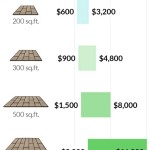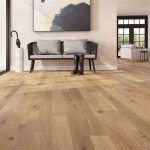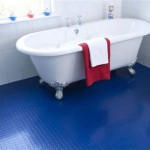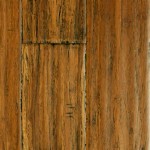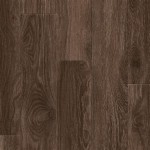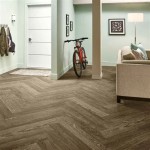Loose Lay Vinyl Flooring Over Carpet: Considerations and Feasibility
The prospect of installing loose lay vinyl flooring over existing carpet can be tempting for those seeking a quick and affordable flooring update. However, the suitability of this approach depends heavily on various factors, including the type and condition of the carpet, the intended use of the room, and the quality of the loose lay vinyl itself. While it might seem like an easy solution, careful consideration and preparation are paramount to avoid potential problems such as uneven surfaces, compromised flooring integrity, and accelerated wear and tear.
Loose lay vinyl flooring is designed for ease of installation. Unlike traditional vinyl flooring that requires adhesive or a click-lock system for secure attachment, loose lay vinyl relies on its weight and a high-friction backing to stay in place. This characteristic makes it appealing for DIY projects and temporary flooring solutions. However, placing it directly over carpet introduces a layer of complexity that can negate some of its advantages.
The primary concern stems from the inherent softness and compressibility of carpet. Carpet, regardless of its pile height or density, provides an unstable base for any hard flooring material. The give in the carpet can lead to movement and shifting of the vinyl planks or tiles, potentially causing gaps, buckling, and premature wear. Furthermore, the carpet's ability to absorb moisture can create an environment conducive to mold and mildew growth, especially in areas prone to spills or high humidity.
Understanding the Challenges of Installing Loose Lay Vinyl Over Carpet
Successfully installing loose lay vinyl flooring over carpet requires a thorough understanding of the potential challenges. Ignoring these challenges can lead to unsatisfactory results and costly repairs down the line.
One of the most significant issues is the uneven surface. Carpet, even when professionally installed, is not perfectly level. Variations in the subfloor, differences in carpet pile, and areas of wear and tear can all contribute to an uneven surface. When loose lay vinyl is placed on top of this unevenness, it can create pressure points and stress on the flooring material. This can result in the vinyl planks or tiles lifting, shifting, or even cracking over time. The instability can also create a tripping hazard, particularly for individuals with mobility issues.
Another challenge is the potential for moisture retention. Carpet fibers readily absorb moisture from the air, spills, and even tracked-in water. This moisture can become trapped between the carpet and the vinyl flooring, creating a breeding ground for mold and mildew. Mold and mildew not only pose health risks but can also degrade the carpet and eventually damage the vinyl flooring as well. This is particularly problematic in bathrooms, kitchens, and basements where moisture levels are typically higher.
The movement and shifting of the vinyl flooring can also damage the carpet underneath. The constant friction between the vinyl backing and the carpet fibers can cause abrasion and wear on the carpet. This can lead to thinning of the carpet pile, matting, and eventual disintegration of the carpet fibers. In addition, the weight of the vinyl flooring can compress the carpet fibers, making it difficult to restore the carpet to its original appearance even after the vinyl flooring is removed.
Conditions Where Loose Lay Vinyl Over Carpet Might Be Considered
While generally not recommended, there are a few specific scenarios where installing loose lay vinyl over carpet might be considered, although even in these cases, careful evaluation and preparation are essential.
One such scenario is a short-term, temporary flooring solution. For example, if a renter wants to update the flooring in a rental unit without permanently altering the existing carpet, loose lay vinyl might be an option. However, it is crucial to choose a high-quality, thicker loose lay vinyl with a robust backing to minimize movement and potential damage to the carpet. It is also essential to obtain permission from the landlord before installing any type of flooring over the existing carpet.
Another possible scenario is a low-traffic area where aesthetics are more important than long-term durability. For example, a spare bedroom or a seldom-used office might be a candidate for loose lay vinyl over carpet. However, it is still important to ensure that the carpet is clean, dry, and relatively level before installing the vinyl flooring. Regular vacuuming and spot cleaning are also necessary to prevent moisture buildup and maintain the appearance of the flooring.
Finally, if the existing carpet is extremely low-pile and tightly woven, it might provide a more stable base for loose lay vinyl. However, it is still crucial to assess the carpet for any signs of wear, damage, or moisture. If the carpet is uneven or shows signs of deterioration, it is best to remove it before installing the vinyl flooring.
Alternatives to Installing Loose Lay Vinyl Over Carpet
Given the potential challenges and drawbacks of installing loose lay vinyl over carpet, exploring alternative flooring solutions is often a more practical and cost-effective approach.
The most recommended alternative is to remove the existing carpet and install the loose lay vinyl flooring directly over the subfloor. This provides a stable and even surface for the vinyl flooring, ensuring proper adhesion and preventing movement. Removing the carpet also eliminates the risk of moisture buildup and mold growth. Before installing the vinyl flooring, it is essential to inspect the subfloor for any damage or unevenness. Any imperfections should be repaired or leveled to ensure a smooth and level surface for the new flooring.
Another alternative is to install a thin layer of underlayment over the carpet before installing the loose lay vinyl. Underlayment provides a more stable and even surface for the vinyl flooring, reducing the risk of movement and shifting. However, it is crucial to choose an underlayment that is specifically designed for use with vinyl flooring and that is compatible with the existing carpet type. It is also important to ensure that the underlayment is properly installed and secured to the carpet to prevent it from shifting or bunching up.
Finally, consider other types of flooring that are designed for installation over existing flooring. For example, some types of click-lock vinyl flooring are designed to be installed over existing hard surfaces, such as tile or concrete. These flooring options typically have a thicker core and a more robust locking system, which provides greater stability and durability. However, it is still important to ensure that the existing flooring is clean, dry, and relatively level before installing the new flooring.
In conclusion, while the idea of installing loose lay vinyl flooring over carpet might seem appealing as a quick and easy solution, it is generally not recommended due to the numerous potential challenges and drawbacks. A thorough evaluation of the existing carpet, the intended use of the room, and the available alternatives is essential before making a decision. In most cases, removing the carpet and installing the vinyl flooring directly over the subfloor is the most practical and cost-effective approach. When considering any flooring project, consulting with a professional flooring installer can provide valuable insights and ensure a successful outcome.

The Best Vinyl Flooring For Over Carpet

The Best Vinyl Flooring For Over Carpet

How To Install Temporary Flooring Over Carpet Inc

Installing Vinyl Plank Flooring Over Carpet Padding

Lynnwood Wa Vinyl Tcb Carpets

A Guide To Installing Vinyl Sheet Flooring Over Carpet Majesty

How To Install Vinyl Flooring Over Carpet

How To Install Temporary Flooring Over Carpet Inc

What Is Loose Lay Vinyl Flooring How To Install Id

How To Install Temporary Flooring Over Carpet Inc

